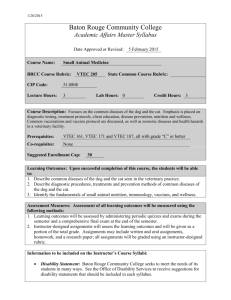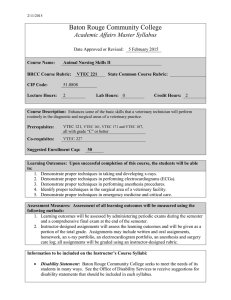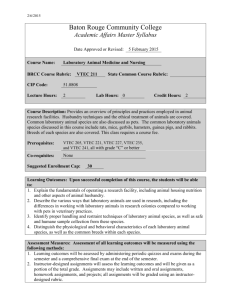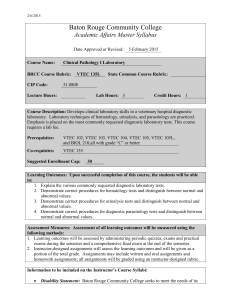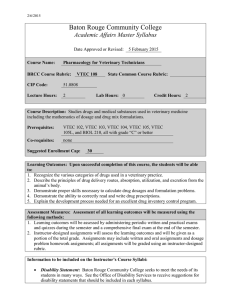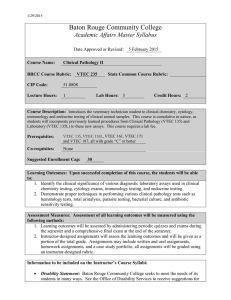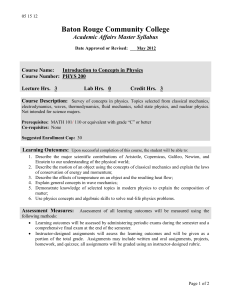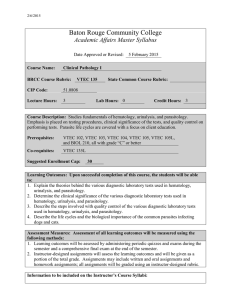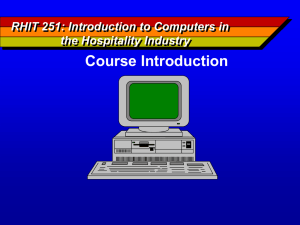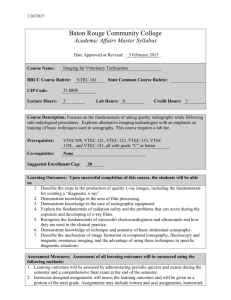VTEC_105L_MS
advertisement
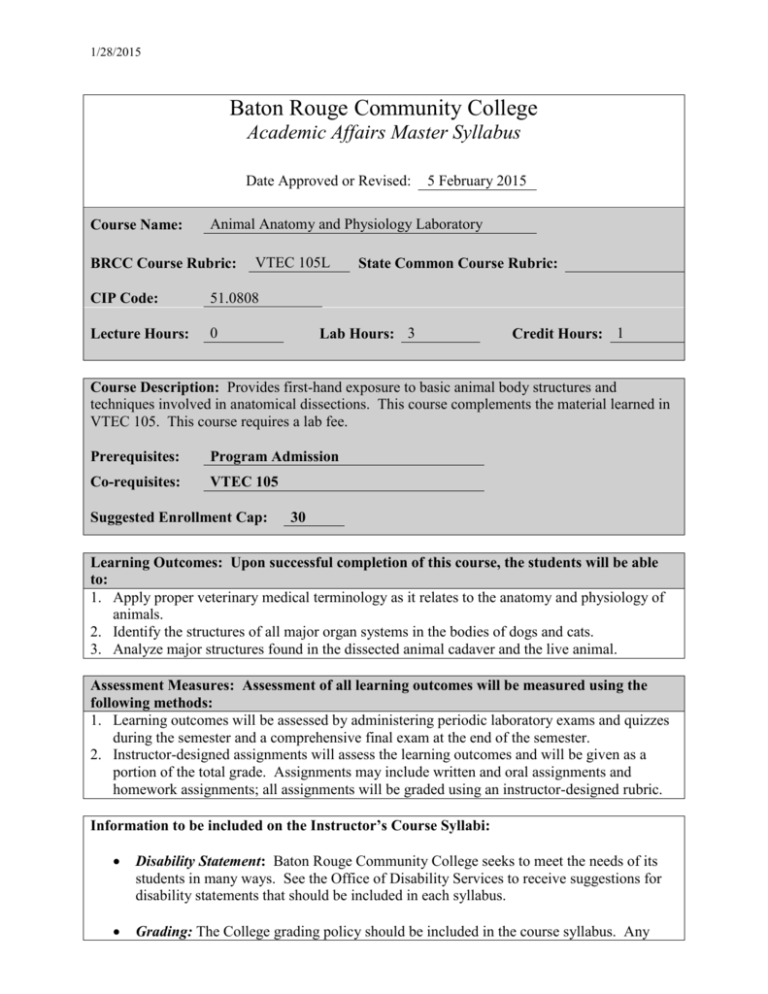
1/28/2015 Baton Rouge Community College Academic Affairs Master Syllabus Date Approved or Revised: Course Name: 5 February 2015 Animal Anatomy and Physiology Laboratory BRCC Course Rubric: VTEC 105L CIP Code: 51.0808 Lecture Hours: 0 State Common Course Rubric: Lab Hours: 3 Credit Hours: 1 Course Description: Provides first-hand exposure to basic animal body structures and techniques involved in anatomical dissections. This course complements the material learned in VTEC 105. This course requires a lab fee. Prerequisites: Program Admission Co-requisites: VTEC 105 Suggested Enrollment Cap: 30 Learning Outcomes: Upon successful completion of this course, the students will be able to: 1. Apply proper veterinary medical terminology as it relates to the anatomy and physiology of animals. 2. Identify the structures of all major organ systems in the bodies of dogs and cats. 3. Analyze major structures found in the dissected animal cadaver and the live animal. Assessment Measures: Assessment of all learning outcomes will be measured using the following methods: 1. Learning outcomes will be assessed by administering periodic laboratory exams and quizzes during the semester and a comprehensive final exam at the end of the semester. 2. Instructor-designed assignments will assess the learning outcomes and will be given as a portion of the total grade. Assignments may include written and oral assignments and homework assignments; all assignments will be graded using an instructor-designed rubric. Information to be included on the Instructor’s Course Syllabi: Disability Statement: Baton Rouge Community College seeks to meet the needs of its students in many ways. See the Office of Disability Services to receive suggestions for disability statements that should be included in each syllabus. Grading: The College grading policy should be included in the course syllabus. Any special practices should also go here. This should include the instructor’s and/or the department’s policy for make-up work. For example in a speech course, “Speeches not given on due date will receive no grade higher than a sixty” or “Make-up work will not be accepted after the last day of class.” Attendance Policy: Include the overall attendance policy of the college. Instructors may want to add additional information in individual syllabi to meet the needs of their courses. General Policies: Instructors’ policy on the use of things such as beepers and cell phones and/or hand held programmable calculators should be covered in this section. Cheating and Plagiarism: This must be included in all syllabi and should include the penalties for incidents in a given class. Students should have a clear idea of what constitutes cheating in a given course. Safety Concerns: In some programs this may be a major issue. For example, “No student will be allowed in the safety lab without safety glasses.” General statements such as, “Items that may be harmful to one’s self or others should not be brought to class.” Library/ Learning Resources: Since the development of the total person is part of our mission, assignments in the library and/or the Learning Resources Center should be included to assist students in enhancing skills and in using resources. Students should be encouraged to use the library for reading enjoyment as part of lifelong learning. Expanded Course Outline: I. Positioning terminology 1) Root words, prefixes, and suffixes II. Tissues 1) Cell structure 2) Tissue organization III. Skeletal system 1) Bones 2) Joints IV. Dissection of the thoracic limb Muscles Joints Bones Vessels Nerves V. Dissection of the pelvic limb Muscles Joints Bones Vessels Nerves VI. Dissection of the thorax 1) Heart 2) Lungs 3) Diaphragm 2 VII. VIII. 4) Great vessels 5) Nerves Dissection of the abdomen 1) Digestive organs 2) Connective tissues 3) Urinary system organs 4) Blood vessels 5) nerves Dissection of the Reproductive tract 1) Male reproductive organs 2) Female reproductive organs 3
